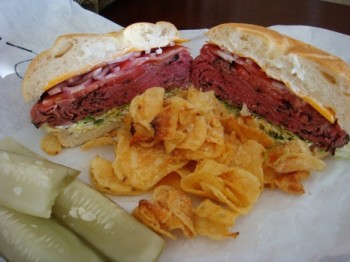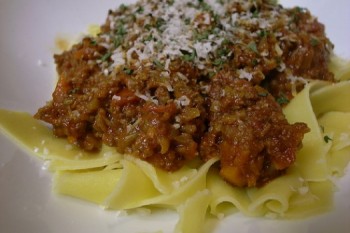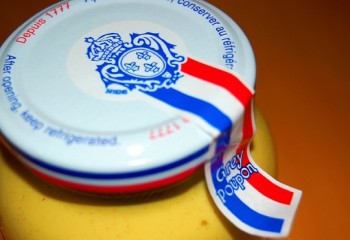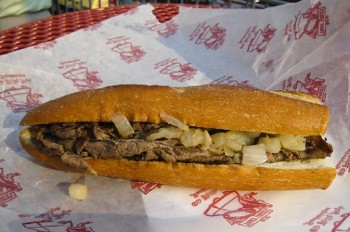You know that old saying, “Which came first, the chicken or the egg?” It’s an age old question that has kept people debating for years. Perhaps a similar argument can be made for foods named for the places associated with their birth. Which is more popular – the place itself or the food attributed to it? It’s a delicious debate to have – one that may never end. But once you’ve sampled these tasty vittles named for places, maybe the question will no longer be important.
The Sandwich

Pastrami on Rye, PB & J, Turkey Club, B.L.T., Meatloaf and Ham and Cheese are all popular types of sandwiches. There are submarine, triple-decker and open-face varieties too. A sandwich, a well-known food item eaten world-wide, is basically anything stuffed between two pieces of bread.
The birth of the sandwich is attributed to the “Earl of Sandwich”, a dignitary of 18th century England. Legend has it that in 1792, the Fourth Earl, John Montagu, who was too busy gambling to break for a full meal, requested a waiter bring him roast beef between two slices of bread.
It’s reported that the bread acted as a barrier between the greasy beef and his fingers, allowing him to continue on with his card game. With the thousands of sandwiches now on offer, I think it’s safe to say that his gamble paid off.
[social]
Fig Newtons

Whether or not you like these moist, square, fig-filled cookies, that kept every grandparent in America ‘regular’, I am sure we all recognize the original bright yellow box in which they are packaged.
There was an old rumor that had these cookies being named for Sir Issac Newton, but that proved to be just an old wive’s tale.
Actually, the Kennedy Biscuit company, which later became Nabisco, began mass producing the Newton in 1891. The company was located in Cambridge, Massachusetts and decided to name the cookie after the nearby town of Newton. The name changed to Fig Newton, after the original fig jam inside the cookie gained popularity.
>> Check out unusual snack foods from around the world
Bolognese Sauce

At first glance, one might think that Oscar Mayer bologna is what Italy’s food capital Bologna is known for – but thank goodness it isn’t! It’s something much more flavorful.
This pasta sauce, known in the city as ragù, is just one of several well-known culinary gems originating from the Emilia-Romagna region which is famous for its Parmesan cheese and Parma ham.
As with many recipes passed down from family generation to generation, each will have its own time-honored ingredients that will differ slightly. Reportedly, the original Bolognese is made with a base of soffritto (carrots, celery, and onion), meat and wine. Some recipes add tomatoes, others use a splash of milk. One thing that rings true regardless of the ingredients is that a bolognese sauce should take time to make. Traditionally, it should be served with a wide noodle companion, like tagliatelle, never a thin spaghetti.
>> Learn more about Italian food
Dijon Mustard

Mustard is one of the world’s oldest condiments, so it would be wrong to say that it was invented in Dijon, France. But what Dijon has over other mustards is a special recipe. In 1856, Jean Naigeon substituted sour unripe grape juice from the Burgundy region, for the traditional vinegar, creating a smoother, milder taste and voila – Dijon mustard was born!
Other factors that contributed to Dijon’s mustard success include a machine invented to process large quantities of mustard seed quickly and the potassium rich soil that the seed thrived in.
Though it was created in Dijon, this French-style mustard can now be made anywhere in the world, but the original recipe remains protected. So, next time you ask someone “Pardon me, do you have any Grey-Poupon?”, don’t be disappointed if what you’re given isn’t made in France.
>> Learn more about French food
Philly Cheesesteak

Just as the name suggests, this sandwich of thinly-sliced chopped steak, fried with onions and topped with cheese, originated in the 1930’s at Lassyunk Avenue near Ninth Street in South Philadelphia, Pennsylvania. The Olivieri brothers, Pat and Harry, are credited with its creation, selling the popular sandwiches at their hot dog stand near South Philly’s Italian Market.
Reportedly, bored of their hot dogs, they decided to try something different for lunch one day. A taxi-driving regular, lured by the smell, asked about the sandwich and the duo sold it to him, sans cheese, for a mere ten cents. Pat claims that cheese wasn’t added until later.
Eventually, Pat opened the aptly named Pat’s King of Steaks, which still operates in the same location. Today there are many variations on the original and the debate continues whether provolone cheese, American cheese or Cheez Wiz (introduced in the 1960’s) makes the best topping.
Yorkshire Pudding

When one thinks of pudding, a sweet, creamy dessert comes to mind. But this British dish, which hails from Yorkshire, England, is something more like a cross between a popover and a souffle. Yorkshire Pudding, also known as ‘Dripping Pudding’ first appeared in print back in the mid 1700’s and was originally created as a filler course for the poor, who couldn’t afford much meat.
A pancake-like batter was placed in a dish in the oven, under the roast while cooking. The drippings would fall into the batter while cooking and then be served before the meat course in order to stretch the meal. Traditionally, it’s made in one communal dish, but today, variations on the original include using a muffin tin for single servings.
Buffalo Wings

Anyone who has ever spent time in a sports bar or attended a Superbowl party should know a thing or two about good Buffalo wings. As the name suggests, these hot wings (and drumsticks), served with cooling blue cheese and celery as sides, were first introduced in Buffalo, New York.
The classic recipe calls for the chicken to be fried without breading and smothered in a cayenne pepper-based hot sauce, rendering them perhaps one of the messiest foods to eat.
Though there are several different versions to the story of their origin, most involve Teressa Bellissimo and the Anchor Bar. Teressa’s son claims that his mother whipped them up as a last minute late-night snack for his friends back in 1964, and the rest is history. The wings were so popular in Buffalo, that in 1977, the Mayor pronounced July 27th, Chicken Wing Day.
Read more about food around the world:
- 11 Delicious Street Foods From Around the World
- 10 Weird Food Delicacies
- 6 Places to Find Great and Exotic Street Food
- A Dish for All Seasons: What to Eat and When to Eat it Around the World
Photos by: dinnercraft, israelavila, naotakem, Sifter, bryce edwards, ZaptheDingbat, phototram